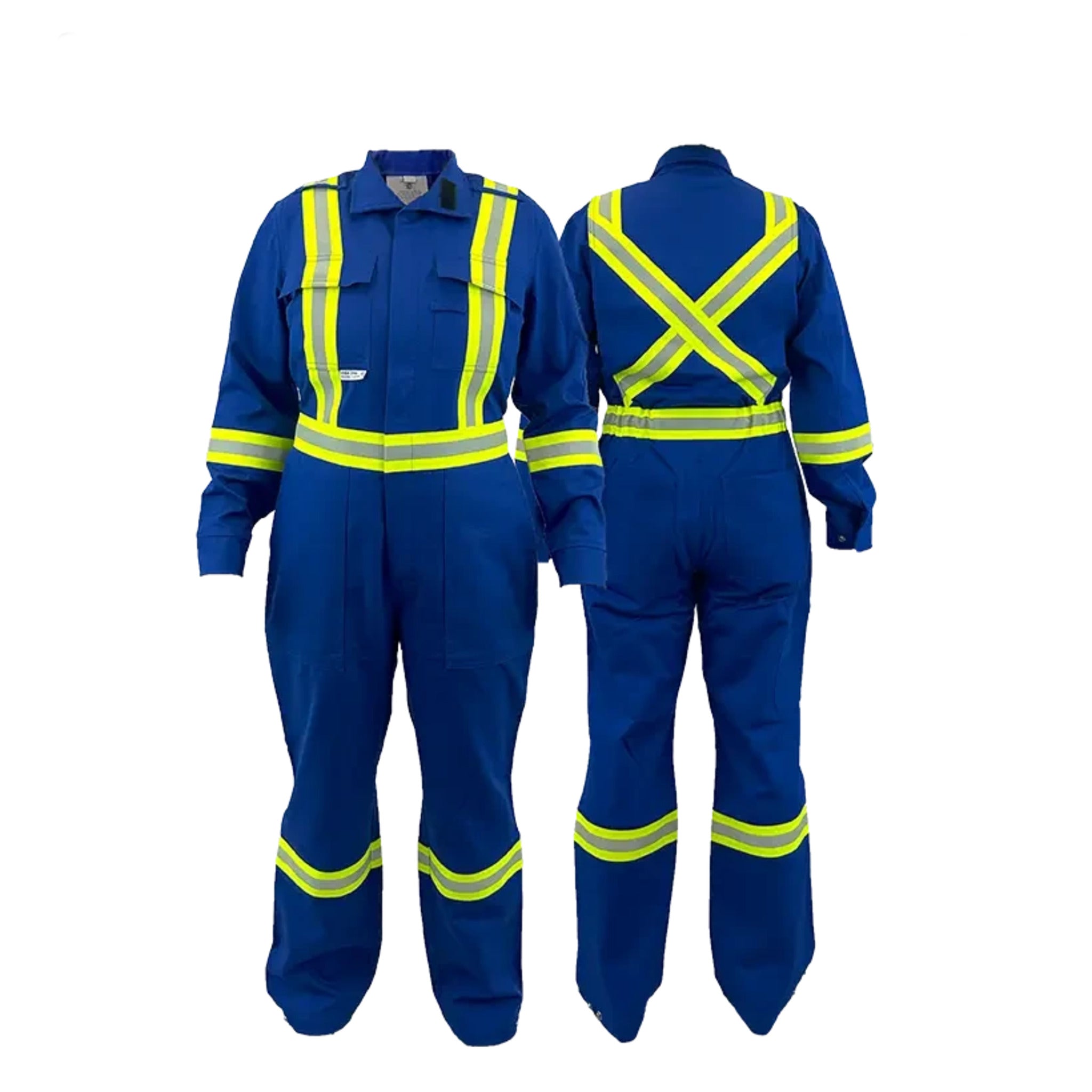Categories
- Shop All (5892)
-
-
- Hi-Vis Chainsaw Safety (14)
- Hi-Vis Coveralls and Overalls (28)
- Hi-Vis Hoodies and Shirts (45)
- Hi-Vis Jackets (39)
- Hi-Vis Pants (22)
- Hi-Vis Rain Wear (48)
- Hi-Vis Vests (54)
- Winter Hi-Vis Bombers and Parkas (25)
- Winter Hi-Vis Coveralls and Overalls (23)
- Winter Hi-Vis Hoodies (4)
- Winter Hi-Vis Pants (4)
- Winter Hi-Vis Vests (6)
-
- Bib Overalls (11)
- Bombers and Parkas (17)
- Coveralls and Overalls (17)
- Disposable Garments (11)
- Flannel and Plaid Work Shirts (22)
- Heated Work Wear (5)
- Hoodies and Sweaters (12)
- Industrial Rainwear (48)
- Pants and Shorts (70)
- Shirts and Sweaters (34)
- Thermal Underwear (44)
- Vests (18)
- Work Jackets (74)
-
-
-
-
- Brooms (0)
- Dust Mops (0)
- Dust Pans and Brushes (0)
- Flow Thru Tools (2)
- Microfiber Mops (0)
- Pool and Tank Tools (2)
- Scrubbers and Scrapers (1)
- Soap and Sanitizer Dispensers (0)
- Sprayers (3)
- Squeegees (1)
- Toilet Brushes and Plungers (1)
- Trash Cans & Bags (8)
- Wet Floor Signs (0)
- Wet Mops and Buckets (2)
-
- Bars and Prying Tools (22)
- Bolt Cutters and Shears (16)
- Chisels and Punches (12)
- Combination Hand Tool Sets (12)
- Extractors (12)
- Files (6)
- Gear Pullers (14)
- Hammers and Mallets (15)
- Hand Saws (22)
- Hex Keys (10)
- Layout and Distance Lasers (1)
- Marking Tools (1)
- Measuring Tools (24)
- Pliers (46)
- Precision Measuring and Testing Tools (24)
- Propane Torches (8)
- Screwdrivers and Nutdrivers (23)
- Sockets (60)
- Tap and Die Sets (4)
- Tool Boxes (27)
- Utility Knives (17)
- VDE Tools (7)
- Wire Cutters and Strippers (14)
- Wrenches (21)
-
- Beveling and Deburring (17)
- Curb and Valve Keys (17)
- Drilling and Tapping (11)
- Extended Impact Sockets (3)
- Flaring and Rerounding (7)
- General Pipe Working Tools (23)
- Guillotine Pipe Cutters (2)
- Hydrostatic Test Pumps (8)
- Internal Pipe Cutters (6)
- PE Peelers (8)
- Pipe Reamers (4)
- Pipe Threading (15)
- Pipe Wrenches (20)
- Plastic Pipe Joint Kits (4)
- Plastic Pipe Saws (5)
- Power Drive (6)
- Quick Release Cutters (15)
- Ratchet Shears (6)
- Ratcheting Wrenches (12)
- Rotary Cutters (3)
- Shut Off Tools (9)
- Soldering Torches (3)
- Vises (7)
-
- Angle Grinders (6)
- Batteries and Chargers (18)
- Bench Grinders (8)
- Circular Saws (3)
- Combo Tool Kits (10)
- Cordless Fans (6)
- Cordless Lighting (15)
- Cut Off Saws (4)
- Drills and Drivers (8)
- Grease Guns (3)
- Impact Drivers (5)
- Jobsite Radios and Speakers (9)
- Lifestyle (7)
- Mitre Saws (2)
- Reciprocating Saws (4)
-
- Angle Grinder Wheels and Brushes (23)
- Bench Grinder Wheels (7)
- Circular Saw Blades (11)
- Drill and Driver Bits (27)
- High Speed Gas Saw Blades (3)
- Holesaws (11)
- Impact Sockets (25)
- Jig Saw Blades (2)
- Oscillating Multi Tool Blades (1)
- Portable Chop Saw Blades (4)
- Power Tool Storage (5)
- Reciprocating Saw Blades (8)
-
-
-
-
- Air Fresheners (2)
- All Purpose Cleaners (19)
- Bowl and Washroom (8)
- Coffee and Breakroom (21)
- Degreasers (3)
- Dishwashing (4)
- Disinfectants and Sanitizers (1)
- Drain Openers (7)
- Hand Cleaners (11)
- Laundry Cleaners (10)
- Paper Products and Wiper Rags (24)
- Scale Removers (2)
- Urinal Pucks and Liquids (5)
- Wet Wipes (4)
-
-
- Ball Valves (13)
- Black and Galvanized Steel Fittings (16)
- Bronze Pipe Fittings and Nipples (16)
- Butterfly Valves (4)
- Check Valves (18)
- Flexible Connectors (4)
- Gate and Globe Valves (6)
- Knife Gate Valves (9)
- Pipe Fitting Accessories (5)
- Schedule 80 PVC Fittings (32)
- Stainless Steel Fittings and Valves (40)
- Victaulic Grooved Fittings (22)

Flame Resistant Work Wear
264 products
Showing 97 - 120 of 264 products
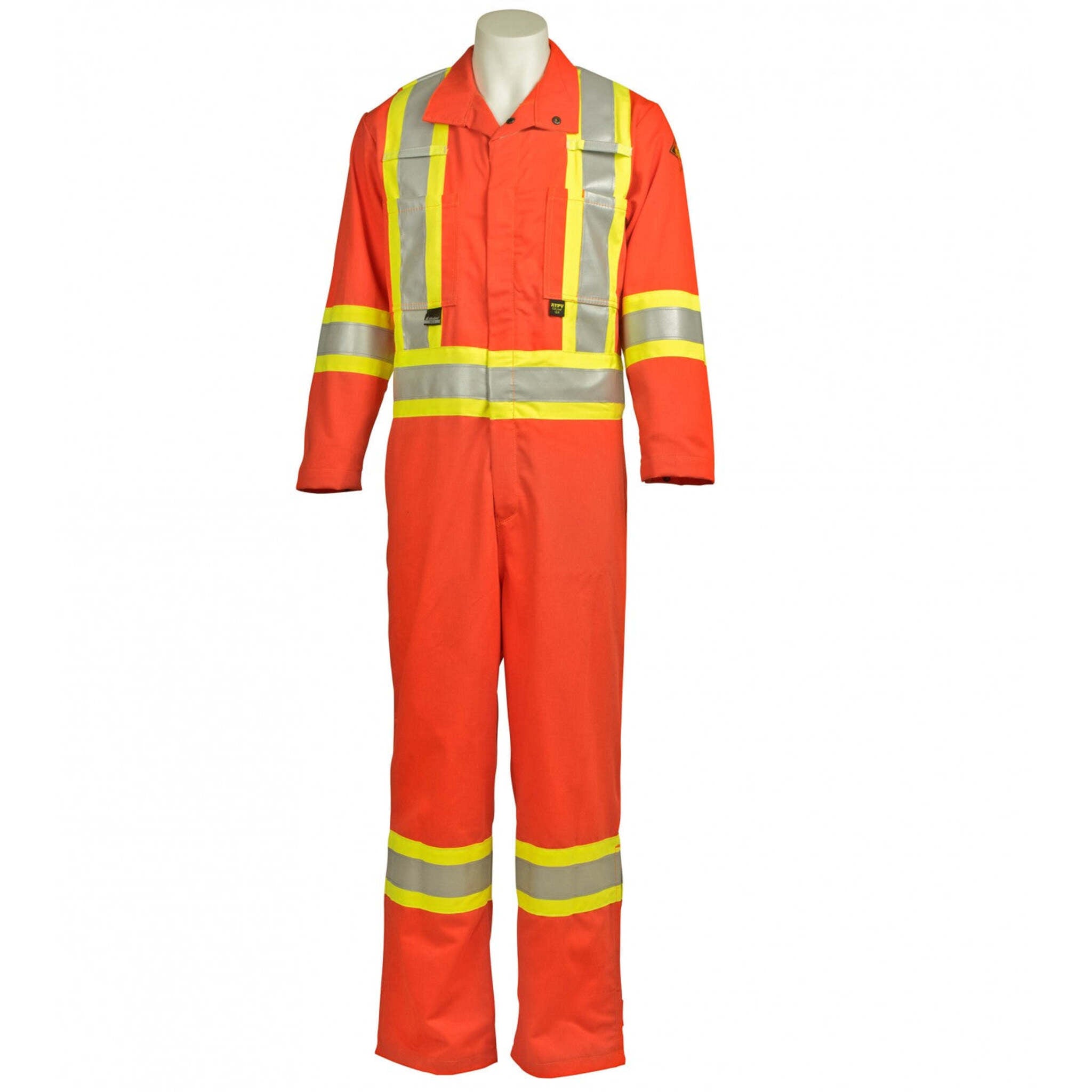

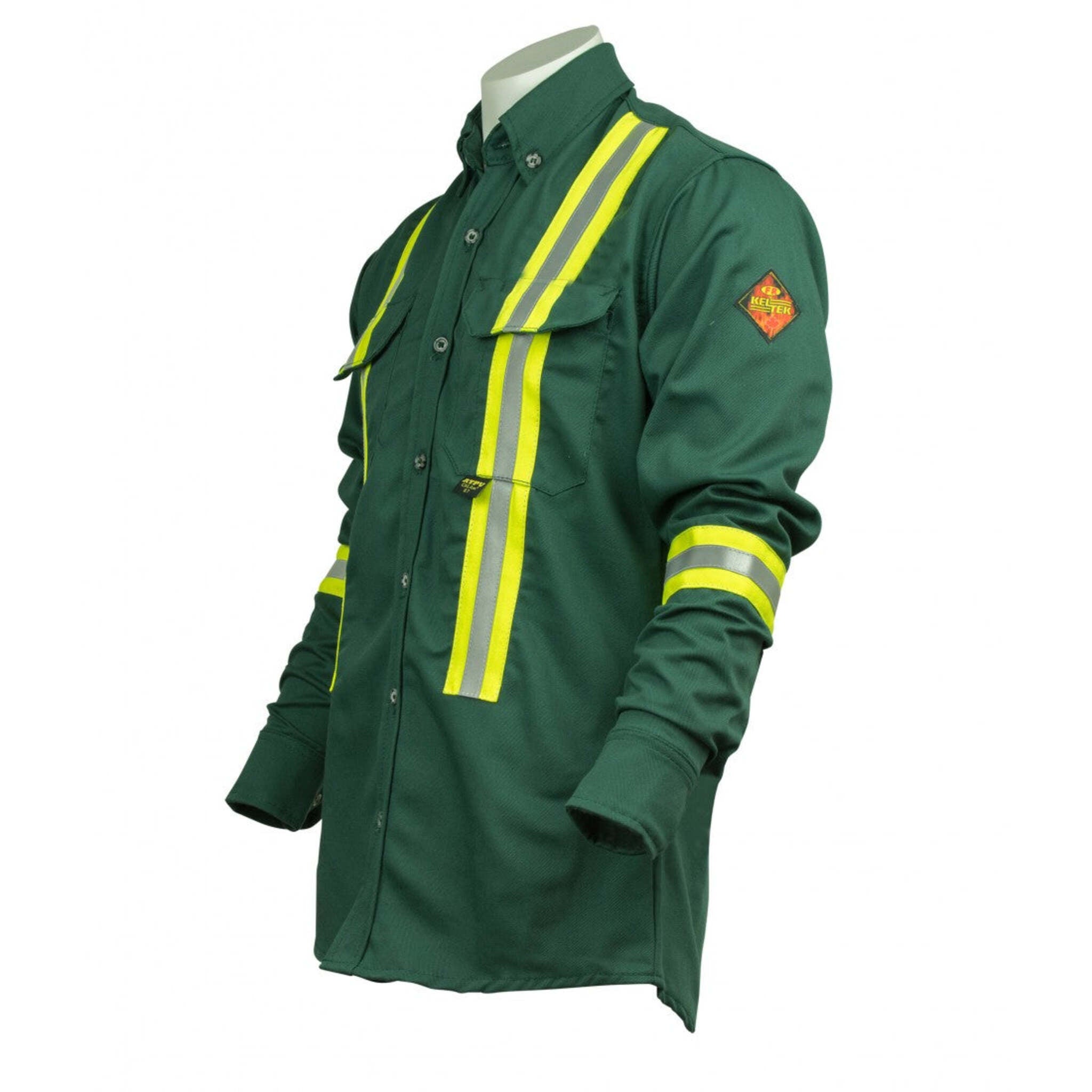
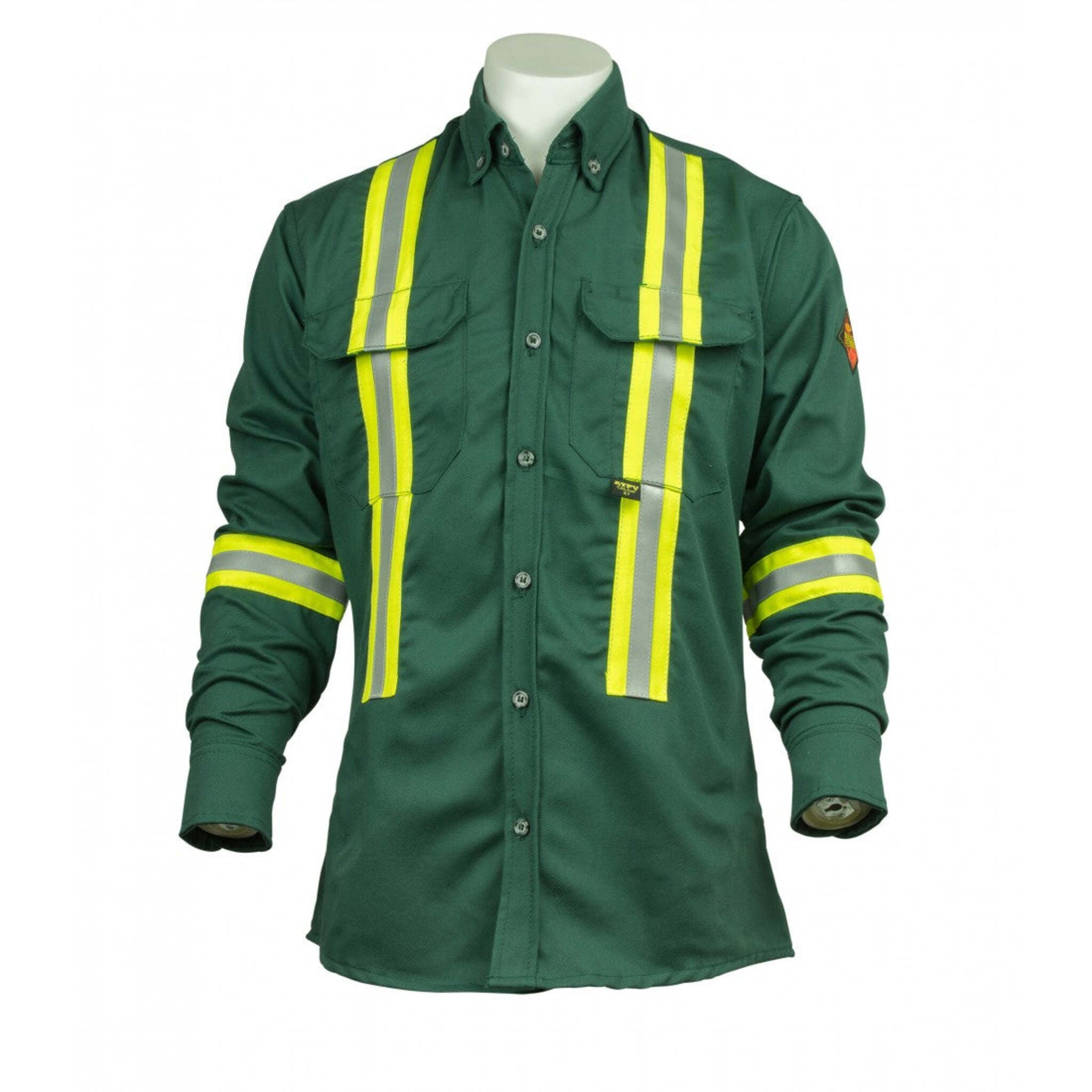
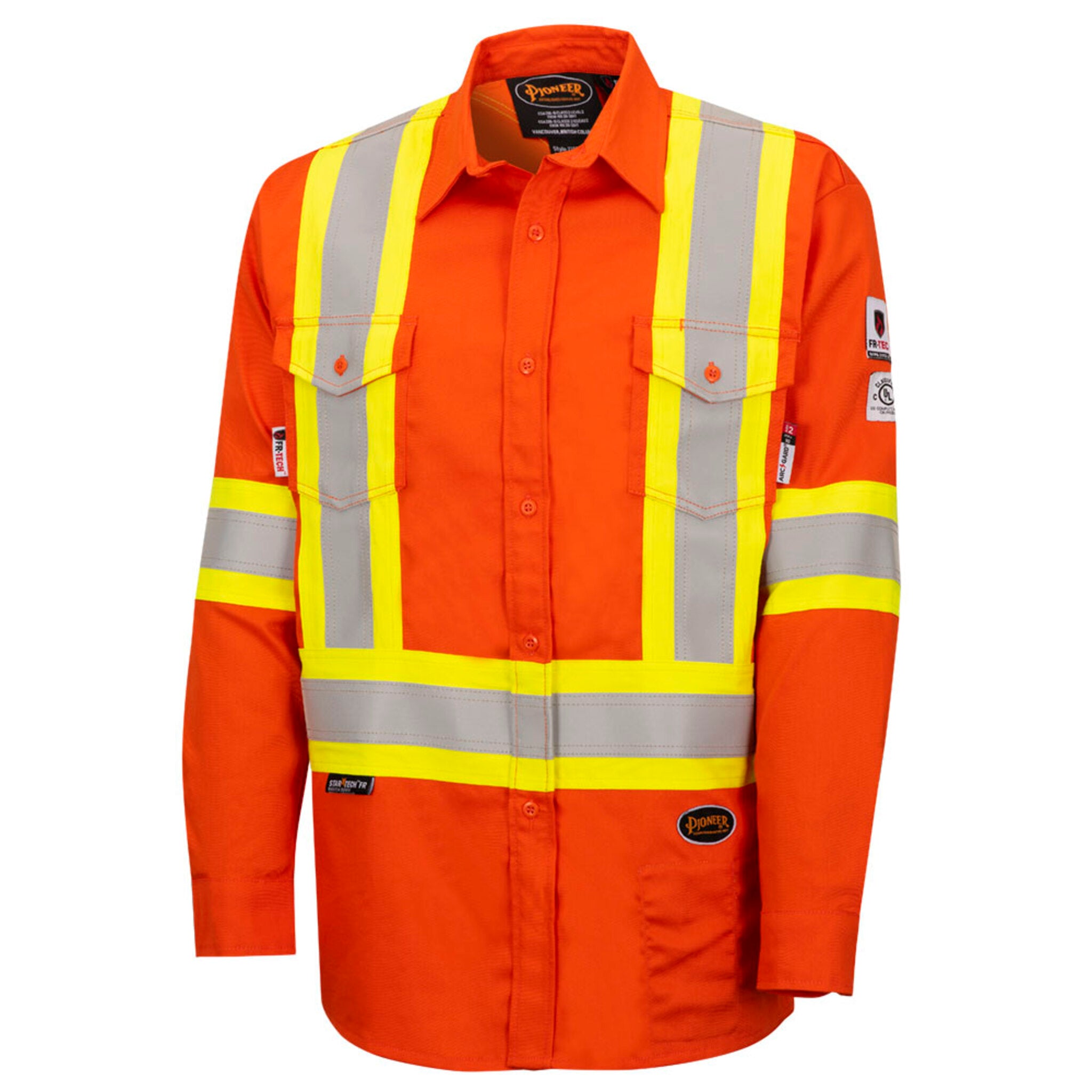
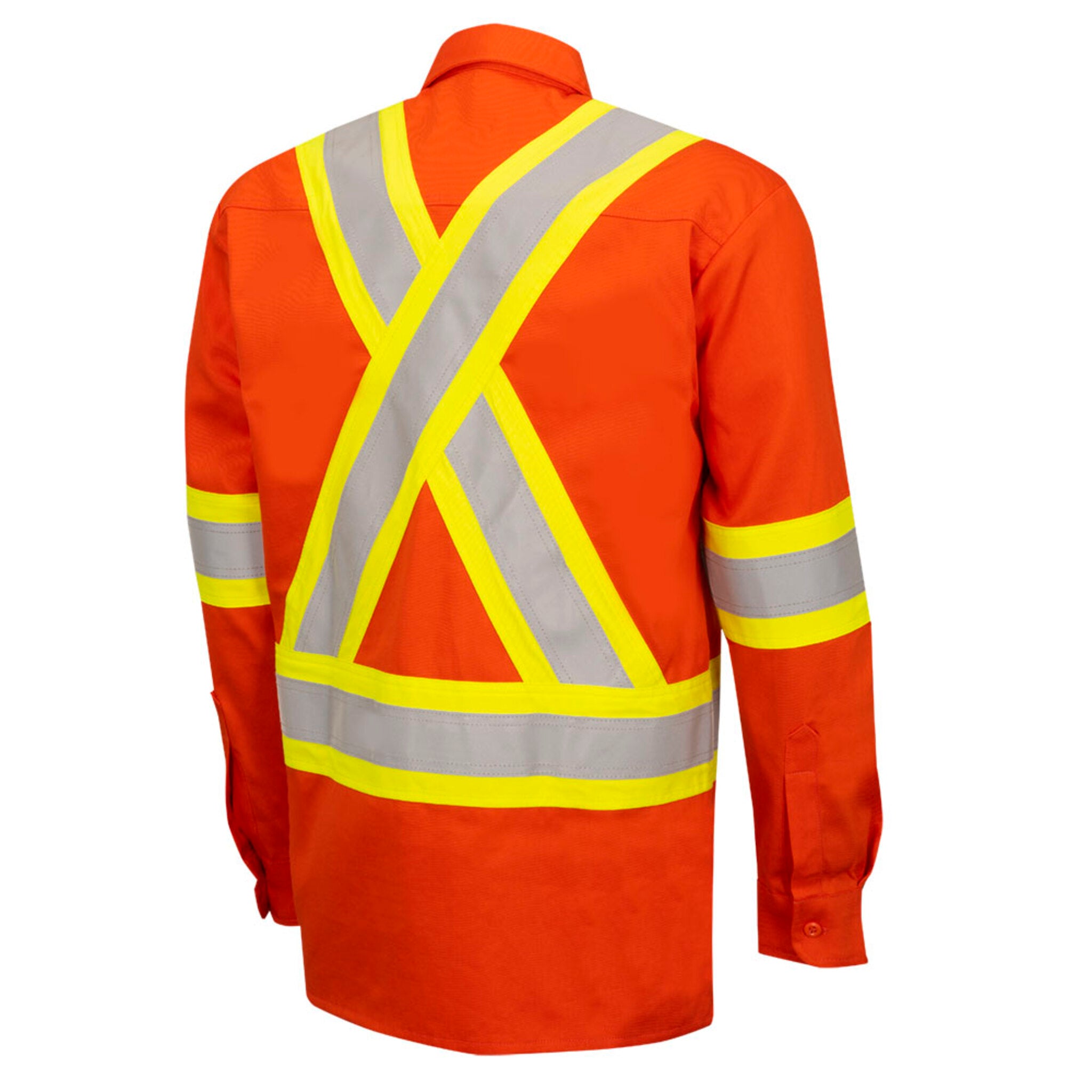
Flame Resistant Work Wear
Flame resistant work wear is specifically designed to protect workers from the hazards of heat and flames in high-risk industries. These garments are made from specialized fabrics that resist ignition, minimize the spread of flames, and provide a crucial layer of protection against burn injuries. In this article, we will explore the importance of flame resistant work wear, the standards and certifications associated with it, the key features to look for, the different types available, how to select the right work wear, care and maintenance tips, advancements in technology, and more.
Introduction to Flame Resistant Work Wear
Flame resistant work wear is an essential component of personal protective equipment (PPE) in industries where workers are exposed to heat and flame hazards. These garments are designed to provide a high level of protection against burns and minimize the risk of serious injuries. Flame resistant work wear is commonly used in industries such as oil and gas, electrical utilities, welding, and firefighting.
Importance of Flame Resistant Work Wear for Safety
Protection against Heat and Flame Hazards
The primary purpose of flame resistant work wear is to protect workers from heat and flame hazards in the workplace. These hazards can result from open flames, electrical arcs, sparks, or molten metals. Flame resistant garments act as a barrier, reducing the risk of burns and limiting the extent of injuries in the event of an accident.
Minimizing the Risk of Injuries
Flame resistant work wear plays a crucial role in minimizing the risk of injuries caused by heat and flames. The specialized fabrics used in these garments are designed to self-extinguish when exposed to flames, preventing the spread of fire and reducing the severity of burns. By wearing flame resistant work wear, workers can significantly reduce their vulnerability to burn injuries.
Compliance with Safety Regulations
Many industries have specific safety regulations and standards that require workers to wear flame resistant work wear in certain environments. Compliance with these regulations is not only essential for worker safety but also for meeting legal obligations and avoiding potential penalties or liabilities. Flame resistant work wear helps companies ensure compliance and maintain a safe work environment.
Standards and Certifications for Flame Resistant Work Wear
Flame resistant work wear is subject to various standards and certifications to ensure its quality and performance. The following are some of the most commonly referenced standards:
NFPA 2112
NFPA 2112 is a standard established by the National Fire Protection Association (NFPA) that outlines the requirements for flame resistant garments in industrial settings. This standard covers specifications for fabric performance, garment design, labeling, and testing procedures.
NFPA 70E
NFPA 70E is another NFPA standard that focuses on electrical safety in the workplace. It includes requirements for flame resistant clothing to protect workers from the hazards of electrical arcs and flash fires.
ASTM F1506
ASTM F1506 is a standard developed by ASTM International that specifies the minimum performance requirements for flame resistant clothing. It includes criteria for fabric flame resistance, heat resistance, and other protective properties.
Key Features of Flame Resistant Work Wear
Flame resistant work wear incorporates specific features that contribute to its protective capabilities:
Flame Resistant Fabrics
Flame resistant work wear is made from specialized fabrics that have inherent flame-resistant properties or have been treated with flame-resistant finishes. These fabrics are designed to resist ignition, self-extinguish when exposed to flames, and minimize the spread of fire.
Heat and Arc Flash Protection
In addition to flame resistance, flame resistant work wear provides protection against heat and electrical arc flashes. The garments are designed to withstand high temperatures and prevent heat transfer to the wearer's skin. They also offer insulation and barrier protection against electrical arcs, reducing the risk of burns.
Durability and Comfort
Flame resistant work wear is built to withstand the rigors of industrial work environments. The garments are constructed using durable materials and reinforced stitching to ensure longevity. Comfort is also a key consideration, and flame resistant work wear often incorporates features such as breathable fabrics, moisture-wicking properties, and ergonomic design to enhance wearer comfort.
Types of Flame Resistant Work Wear
Flame resistant work wear is available in various forms to accommodate different job requirements:
Flame Resistant Clothing
Flame resistant clothing includes items such as coveralls, jackets, shirts, pants, and bib overalls. These garments provide full-body protection and are designed to be worn over regular clothing. Flame resistant clothing is available in different styles and configurations to suit various workplace needs.
Flame Resistant Accessories
In addition to clothing, there are flame resistant accessories available to provide additional protection. These accessories include gloves, hoods, balaclavas, and head covers. They are designed to cover exposed areas and enhance overall protection against heat and flames.
Selecting the Right Flame Resistant Work Wear
When choosing flame resistant work wear, several factors should be considered:
Assessing Workplace Hazards
Assess the specific heat and flame hazards present in the work environment. Consider factors such as the intensity of heat exposure, potential sources of ignition, and the likelihood of electrical arcs. This assessment will help determine the level of protection and the appropriate standards to meet.
Considering Comfort and Fit
Comfort and fit are essential for workers to perform their tasks effectively while wearing flame resistant work wear. Look for garments that allow freedom of movement, have adjustable features, and provide adequate ventilation. Properly fitting garments ensure optimal protection and wearer comfort.
Understanding Garment Labels and Specifications
Pay attention to garment labels and specifications to ensure that the work wear meets the necessary safety standards and regulations. Look for information on flame resistance, compliance with relevant standards, and any specific performance ratings.
Care and Maintenance of Flame Resistant Work Wear
Proper care and maintenance are crucial for preserving the protective properties of flame resistant work wear:
Washing and Cleaning Guidelines
Follow the manufacturer's washing instructions to ensure proper care of flame resistant work wear. Use mild detergents and avoid harsh chemicals or bleach that can affect the fabric's flame-resistant properties. Wash the garments separately and avoid overloading the washing machine to prevent excessive wear.
Inspecting for Damage or Wear
Regularly inspect flame resistant work wear for signs of damage, wear, or deterioration. Look for frayed stitching, holes, tears, or faded areas. Replace any garments that no longer meet the flame-resistant standards or show signs of compromise.
Advancements in Flame Resistant Work Wear Technology
Advancements in technology have led to the development of innovative features in flame resistant work wear:
Moisture-Wicking and Breathable Fabrics
Newer flame resistant work wear utilizes moisture-wicking and breathable fabrics. These fabrics help manage perspiration and keep the wearer dry and comfortable throughout the workday. They allow heat and moisture to escape while maintaining the garment's flame-resistant properties.
Integrated Safety Features
Some flame resistant work wear incorporates integrated safety features, such as reflective strips or bands. These features enhance visibility, especially in low-light conditions, and contribute to the overall safety of the wearer.
Conclusion
Flame resistant work wear is essential for protecting workers in high-risk industries where heat and flame hazards are present. By understanding the importance of flame resistant work wear, the standards and certifications associated with it, the key features to look for, and proper care and maintenance guidelines, employers can ensure the safety and well-being of their workers. Investing in high-quality flame resistant work wear and staying updated with advancements in technology can significantly reduce the risk of burn injuries and maintain a safe work environment.
FAQs
- Can flame resistant work wear protect against all types of fire hazards?
Flame resistant work wear provides a high level of protection against heat and flame hazards. However, it is essential to assess the specific fire hazards in the work environment and select work wear that meets the appropriate safety standards and certifications.
- Can flame resistant work wear be worn in hot climates?
Flame resistant work wear is available in different fabric weights and styles to accommodate different climates and working conditions. Look for garments that offer breathability and moisture-wicking properties to ensure comfort in hot climates.
- How often should flame resistant work wear be replaced?
The lifespan of flame resistant work wear depends on several factors, including usage, exposure to hazards, and adherence to maintenance guidelines. Regularly inspect the garments for signs of wear, damage, or compromised flame resistance. Replace any garments that no longer meet the necessary safety requirements.
- Can flame resistant work wear be customized with company logos or names?
Many manufacturers offer the option to customize flame resistant work wear with company logos, names, or other identifiers. This allows for easy identification of workers while maintaining the flame-resistant properties of the garments.
- Can flame resistant work wear be repaired if it gets damaged?
Minor repairs, such as fixing small tears or replacing buttons, can be done to extend the life of flame resistant work wear. However, it is crucial to consult the manufacturer's guidelines and consider the type and extent of the damage. For major damage or if the flame-resistant properties are compromised, it is advisable to replace the work wear to ensure adequate protection.
































